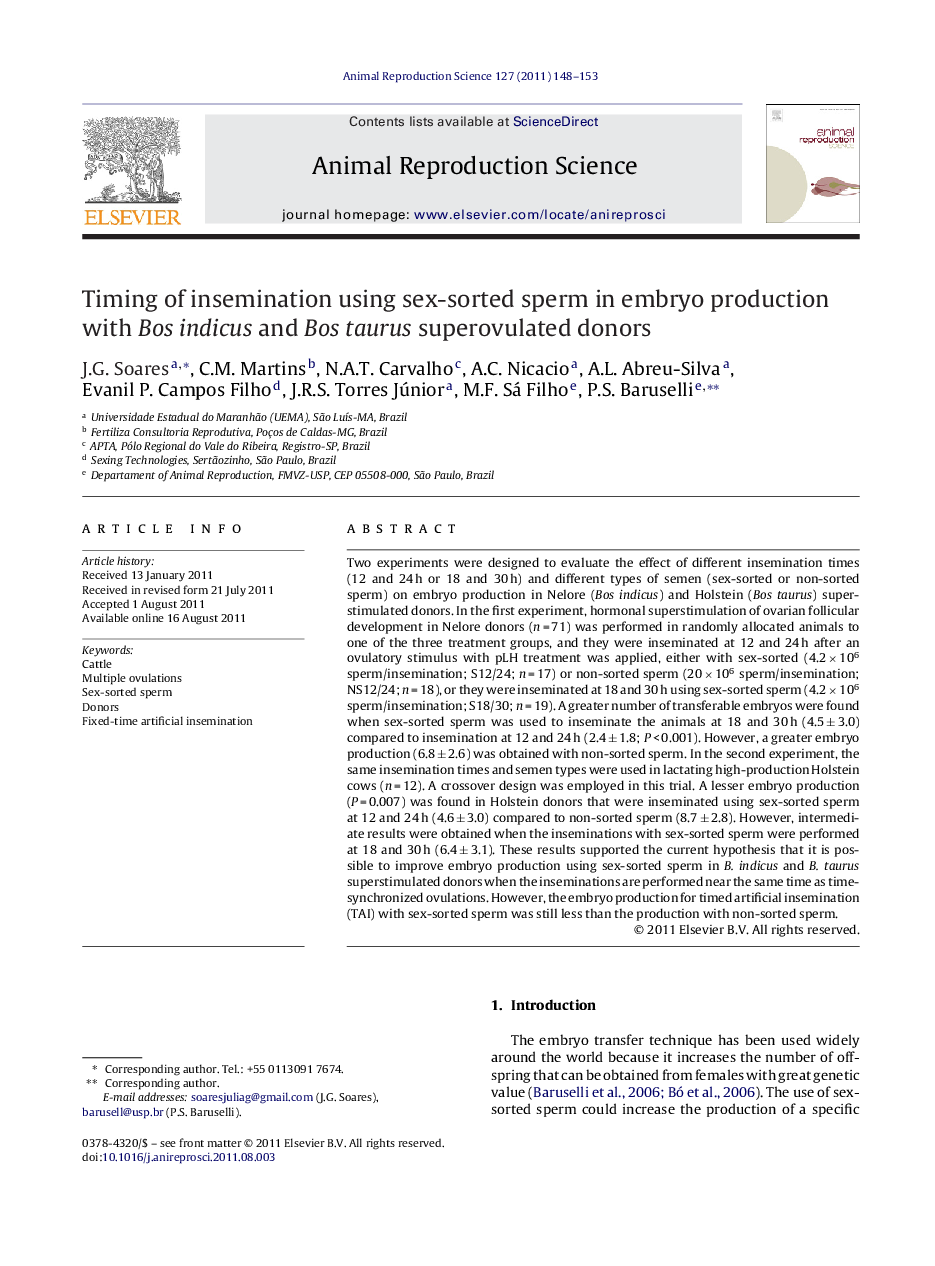| کد مقاله | کد نشریه | سال انتشار | مقاله انگلیسی | نسخه تمام متن |
|---|---|---|---|---|
| 2073467 | 1544769 | 2011 | 6 صفحه PDF | دانلود رایگان |

Two experiments were designed to evaluate the effect of different insemination times (12 and 24 h or 18 and 30 h) and different types of semen (sex-sorted or non-sorted sperm) on embryo production in Nelore (Bos indicus) and Holstein (Bos taurus) superstimulated donors. In the first experiment, hormonal superstimulation of ovarian follicular development in Nelore donors (n = 71) was performed in randomly allocated animals to one of the three treatment groups, and they were inseminated at 12 and 24 h after an ovulatory stimulus with pLH treatment was applied, either with sex-sorted (4.2 × 106 sperm/insemination; S12/24; n = 17) or non-sorted sperm (20 × 106 sperm/insemination; NS12/24; n = 18), or they were inseminated at 18 and 30 h using sex-sorted sperm (4.2 × 106 sperm/insemination; S18/30; n = 19). A greater number of transferable embryos were found when sex-sorted sperm was used to inseminate the animals at 18 and 30 h (4.5 ± 3.0) compared to insemination at 12 and 24 h (2.4 ± 1.8; P < 0.001). However, a greater embryo production (6.8 ± 2.6) was obtained with non-sorted sperm. In the second experiment, the same insemination times and semen types were used in lactating high-production Holstein cows (n = 12). A crossover design was employed in this trial. A lesser embryo production (P = 0.007) was found in Holstein donors that were inseminated using sex-sorted sperm at 12 and 24 h (4.6 ± 3.0) compared to non-sorted sperm (8.7 ± 2.8). However, intermediate results were obtained when the inseminations with sex-sorted sperm were performed at 18 and 30 h (6.4 ± 3.1). These results supported the current hypothesis that it is possible to improve embryo production using sex-sorted sperm in B. indicus and B. taurus superstimulated donors when the inseminations are performed near the same time as time-synchronized ovulations. However, the embryo production for timed artificial insemination (TAI) with sex-sorted sperm was still less than the production with non-sorted sperm.
Journal: Animal Reproduction Science - Volume 127, Issues 3–4, September 2011, Pages 148–153